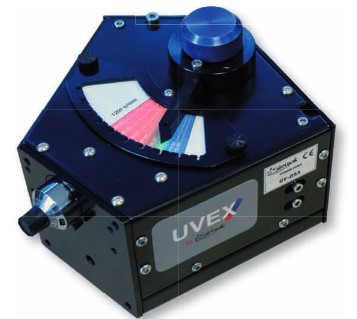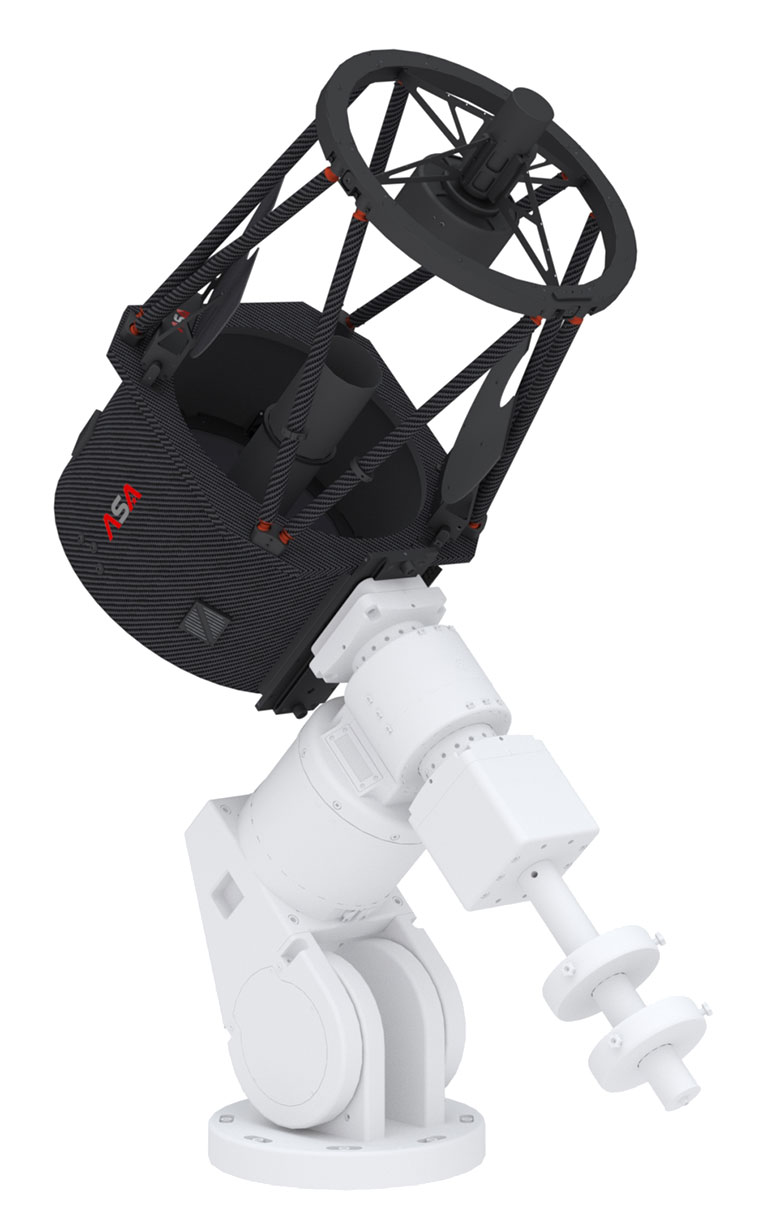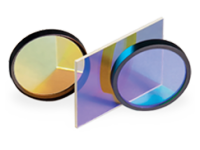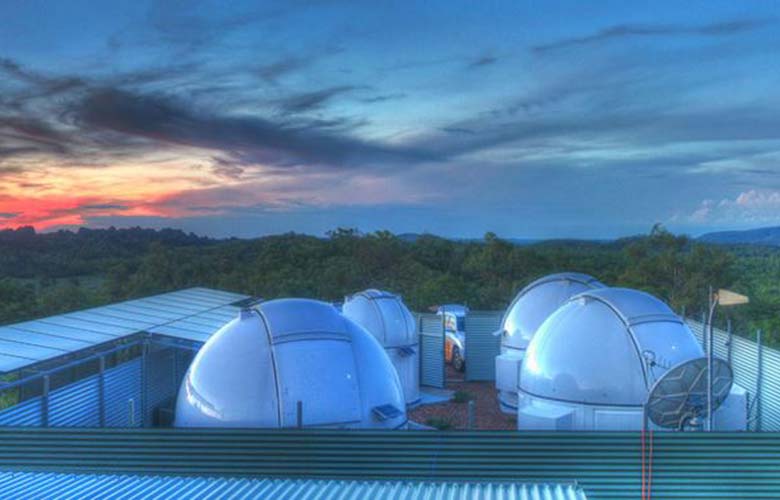Exposure control
The shortest theoretical exposure time of the C5 cameras depends on the used sensor type:
- C5A/C5S-100M shortest exposure is 164 μs
- C5A/C5S-150M shortest exposure is 183 μs
However, such short exposures have no practical application, especially in astronomy. The camera firmware rounds exposure time to a multiply of 100 μs intervals, so in reality the shortest exposure time of both camera models is 200 μs.
| Remark: Note the individual lines are not exposed at the same time, regardless of how short the exposure is, because of the rolling-shutter nature of the used sensors. The difference between the first and last line exposure start time is 0.49 s for the C5A/C5S-150M and 0.36 s for the C5A/C5S-100M camera. |
There is no theoretical limit on maximal exposure length, but in reality, the longest exposures are limited by saturation of the sensor either by incoming light or by dark current (see the following chapter about sensor cooling).
| Warning:
Please note the short exposure timing is properly handled in the camera firmware version 6.5 and later. |
C5A mechanical shutter
C5A cameras are equipped with mechanical shutter, which is very important feature allowing unattended observations (fully robotic or just remote setups). Without mechanical shutter, it is not possible to automatically acquire dark frames, necessary for proper image calibration etc.
Mechanical shutter in the C5A cameras is designed to be as reliable as possible, number of open/close cycles is virtually unlimited, because there are no surfaces rubbing against each other. The price for high reliability is slow shutter motion. Luckily, mechanical shuttering is not necessary for exposure control, only for taking dark frames and possibly bias frames — all used CMOS sensors are equipped with electronic shuttering.
Camera firmware optimizes the shutter operation to avoid unnecessary movements. If a series of light images is taken immediately one after another, the shutter remains open not to introduce quite significant delay of the close/open cycle between each pair of subsequent light images. In the case next image has to be dark or bias frame, shutter closes prior to dark frame exposure and vice versa — shutter remains closed if a series of dark frames is acquired and opens only prior to next light frame. If no exposure is taken for approx. 10 seconds while the shutter is open (this means after a light image exposure), camera firmware closes the shutter to cover the sensor from incoming light.
C5S hardware trigger input
The C5S trigger input allows for external hardware to determine the exact time of exposure start.
| Remark: The external exposure triggering is supported by a variant of the StartExposure function named StartExposureTrigger, available for the user of the Camera SDK for Windows as well as Linux and Mac libraries and drivers. However, the SIPS software does not support triggered exposures. |
The port uses RJ11 four-pin connector. Pins 1 and 2 are connected and have a function of positive pole, pins 3 and 4 are connected to negative pole. The trigger is activated when an external hardware connects pins 1 and/or 2 with pins 3 and/or 4. The trigger input port is electrically isolated from the rest of the camera — power and USB grounds etc.

| 1 | Positive (+) pin No. 1 | |
| 2 | Positive (+) pin No. 2 | |
| 3 | Negative (-) pin No. 1 | |
| 4 | Negative (-) pin No. 2 | |
The trigger input is located on the upper-left portion of the C5S camera back side, just above the power input plug.
 Back side of the C5S (left) and C5A (right) cameras
Back side of the C5S (left) and C5A (right) cameras
GPS exposure timing
C5 cameras can be equipped with GPS receiver module (see the Optional Accessories chapter). The primary purpose of the GPS receiver is to provide precise times of exposures taken with the camera, which is required by applications dealing with astrometry of fast-moving objects (fast moving asteroids, satellites, and space debris on Earth orbit, …).
The GPS module needs to locate at last 5 satellites to provide exposure timing information. Geographic data are available if only 3 satellites are visible, but especially the mean sea level precision suffers if less than 4 satellites are used.
The camera SDK provides functions, allowing users to access precision exposure times as well as geographics location. The SIPS software package main imaging camera control tool window contains the “GPS” tab, which shows the state of the GPS fix.

Determination of exact exposure time is quite complicated because of the rolling-shutter nature of the used sensors. Camera driver does all the calculations and returns the time of the start of exposure of the first line of the image. Still, users interested in precise exposure timing need to include several corrections into their calculations:
- Individual image lines are exposed sequentially. The time difference between start of exposure of two subsequent lines is fixed for every sensor type:
- C5A/C5S-100M line exposure takes 40.944 μs
- C5A/C5S-150M line exposure takes 45.833 μs
- If the image is binned, single line of resulting image contains signal from multiple added (or averaged) lines, each with different exposure time start. The exposure start of individual lines of the binned images differs by the single line time difference, multiplied by the vertical binning factor.
- If only a sub-frame is read, it must be considered that the sensor imposes some restrictions to the sub-frame coordinates. If the required sub-frame coordinates violate the sensor-imposed rules, camera driver enlarges the sub-frame region to fully contain desired sub-frame and then crops it by software. The provided start exposure time then concerns the first line actually read from the camera, not the first line of the resulting (software cropped) image.
- For instance, the y-coordinate of the sub-frame must not be lower than 25 lines. If a sub-frame with lower y-coordinate is asked by the user, whole frame is read and cropped by software. Note the camera SDK offers function AdjustSubFrame, which returns the smallest sub-frame, fully containing the requested sub-frame, but also fulfilling the sensor-imposed sub-frame coordinate restriction. If adjusted sub-frame is read, no software cropping occurs and image exposure time concerns the first line of the image. The SIPS software offers the “Adjust Frame” button, which adjusts defined sub-frame.
| Warning:
Please note the precise exposure timing is properly handled in the camera firmware version 7.10 and later. |
Always use the latest camera drivers (ASCOM or Camera SDK DLLs in Windows, INDI or libraries in Linux) available on the web. Also, always update the firmware in the Moravian Camera Ethernet Adapter if the camera is connected over Ethernet.











